Plant Seed AvailabilitySeed Collection
Size Availability
We produce and collect seed of several plant species and are establishing larger seed orchards of rare or hard-to-find plants for which seed is typically unavailable in large quantities. Although we typically use most of the collected seed for producing nursery seedlings, surplus seeds are available here. One of our primary goals in producing plant seeds is to ensure the availability of genetically diverse propagation material for vulnerable and threatened species from around the world, but especially from our region of Southern Oregon and Northern California. When establishing seed orchards we try to have parent plants from as many populations as possible so that the seedlings produced will be highly varied and maintain genetic traits from as much of the species' genomes as possible. Genetically diverse parent material is absolutely imperative for maintaining a species' ability to withstand changing environments and pressure from new or adapting pests in the ecosystem.
Out of season.
Our main crop of most plants is available starting in late fall.
Additional batches of plugs and quarts are usually added in May.
Many of our plants are propagated in limited quantities and can sell out quickly when posted, get on the notification list below so you don't miss out. Add your email to be notified as soon as we have them back in stock:
This does NOT subscribe your email to any mailing lists, our system will only send an inventory notification message.
While most of the seed we grow is for shrubs, trees, and perennials, we also occasionally offer selections of annuals that we use for cover crops. Our cover crop seed is generally selected to thrive in hot, dry climates but not particularly cold climates.
Notes on some of our current seed orchards:
Modoc Cypress -
Cupressus bakeri
Typically has fairly low germination rates, around 20% in our experience. Does best in mineral soil in bright locations, we have found 60% perlite to 40% peat works well. Most of the trees in our seed orchard are grown from the Klamath/Siskiyou population near the Oregon/California border but one or two of the trees are from a nursery who said the seed source was Timbered Crater.
Brewer Spruce
- Picea breweriana
Our trees are still young and not ready to produce cones yet but we are attempting to speed the process up by grafting onto various faster-growing rootstocks. The original seed source for our orchard trees are from a wide range of populations, collected by Oregon Department of Forestry.
Sadler Oak -
Quercus sadleriana
The plants are still young and so not producing nuts yet. The orchard plants are from a large number of populations throughout the Sadler Oak's limited range. These seeds don't store well so need to be planted immediately in the fall.
Port Orford Cedar -
Chamaecyparis lawsoniana
- Lateralis Block 1
- P. lateralis
resistance
Our Block 1 seed orchard is made of up seedlings from gen-1 of the Oregon Department of Forestry's root rot resistance breeding program, seed from this orchard is expected to generally have moderate resistance to the disease and so is suitable for landscape and forestry planting in areas without high disease pressure. Not all seedlings will contain genetics for resistance and so seedlings from Block 1 are not recommended for high-value plantings such as rootstock for
C. lawsoniana
varieties. For high-value plantings use selected seedlings which have been tested for high resistance. Second generation seed will be available over the coming years which will have improved genetics.
Dawn Redwood -
Metasequoia glyptostroboides
Limited availability for 2021.
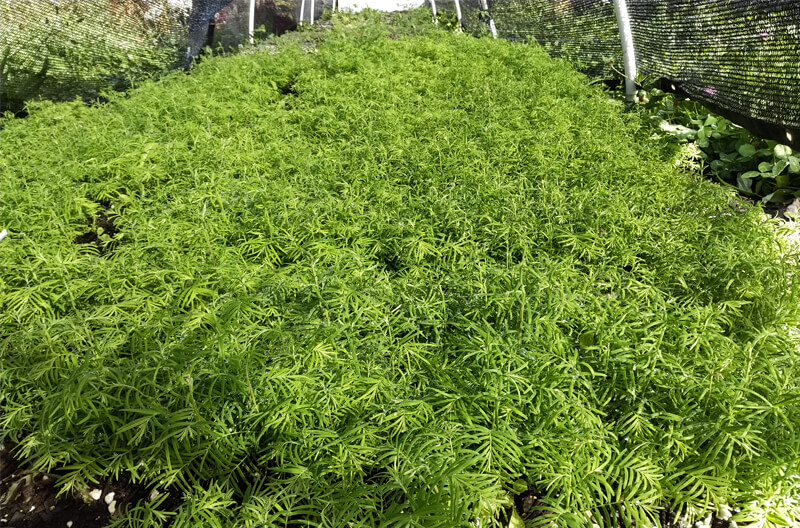
Growing Dawn Redwoods from seed
Packing Plants For ShippingMost of our plants are shipped bare root while they are dormant from late November through April and ship via the U.S. Postal Service. Bamboo plants can be shipped in their containers year-round by UPS.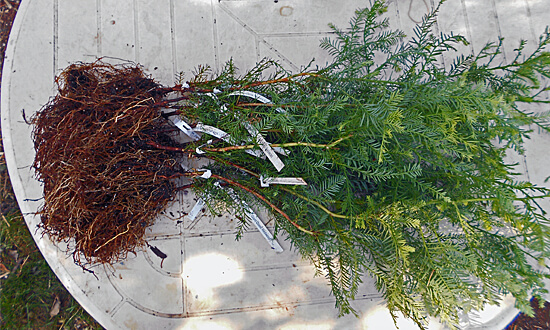 Bare root plants are soaked and wrapped together in bundles. ictured are 10x 24 inch tall Coast Redwoods. 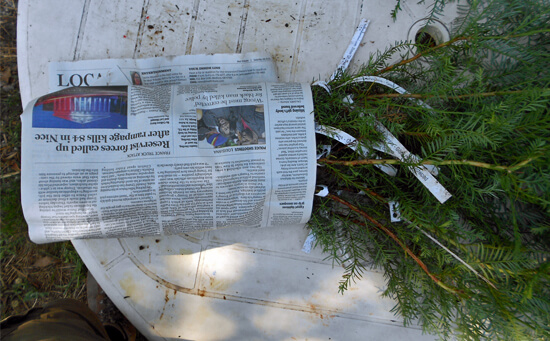 The bundled plants are wrapped in paper and labeled by variety. 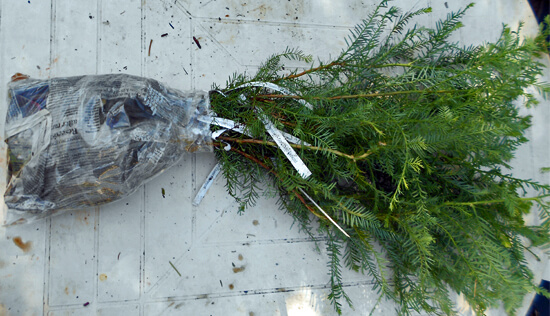 The bundle is wetted and bagged. 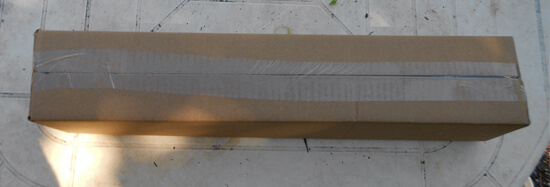 Bundles of plants are secured in long boxes. Pruning and Plant SizesWe prune both the tops and the roots of our plants at least once per year while they are growing in our nursery to ensure they develop a strong, dense form. Regular annual pruning goes a long way to ensure a healthy branching structure and this is often a missed step in many nurseries. Pruning a plant back hard after it has been neglected pruning-wise often results in an irregular branch habit or multiple leaders so we prune early and regularly instead. We also prune the roots of our plants while they are dormant which causes them to produce a much more branched structure and helps to elimate tangled masses that hinder future development. Plants that have been root pruned establish themselves much more quickly than root bound plants. Generally, hardwood plants will be pruned in the winter and conifers will be pruned in the summer.Before shipping plants we prune the tops and roots one last time. Conifers will usually have very little pruning except to balance out long branches. Shrubs are usually pruned to around 1-2 feet tall to encourage low branch development and small to medium sized trees are usually pruned to around 36-40 inches. Pruning trees at this height encourages dominant branches to begin forming around 3 feet from the ground which typically looks the best in most situations. However, if you want a tree to have branching start higher (some city codes require trees to not branch below 4 feet) we have longer boxes available. To request taller trees please contact us at least three days before your ship date. Depending on your location and the shipping routes there may be a fee for oversize package handling (usually about $15 for a 60 inch box). 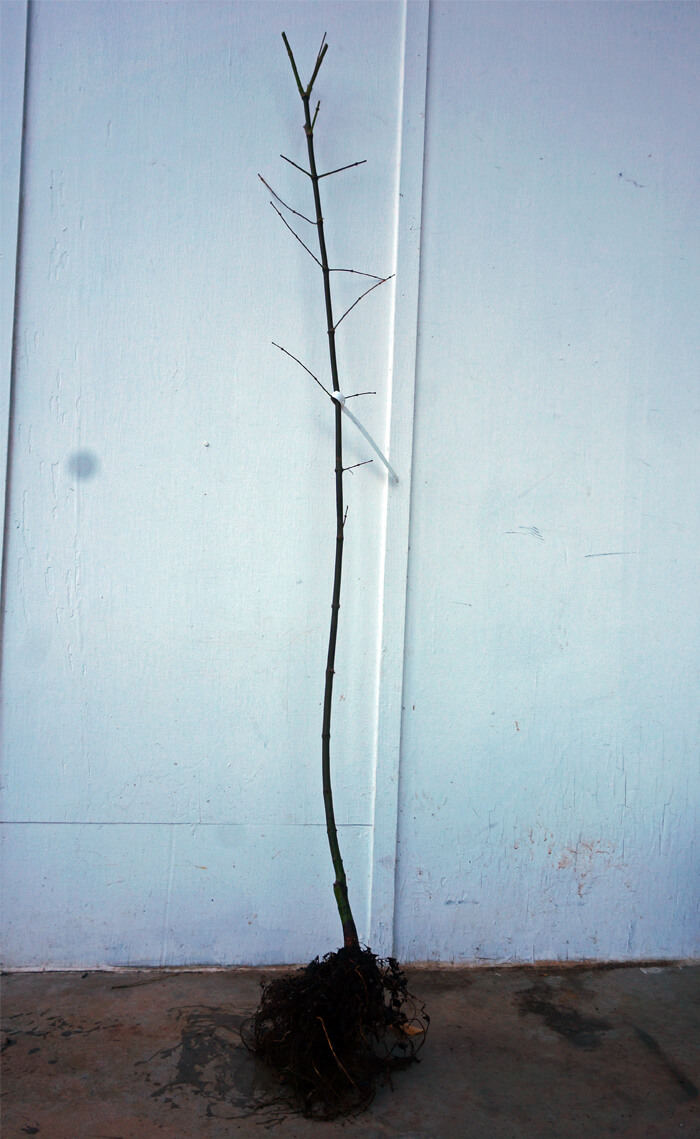 Tall trees (Oaks, Ginkgo, large Maples, etc.) are pruned to 40 inches to encourage crown development from about 36 inches and up 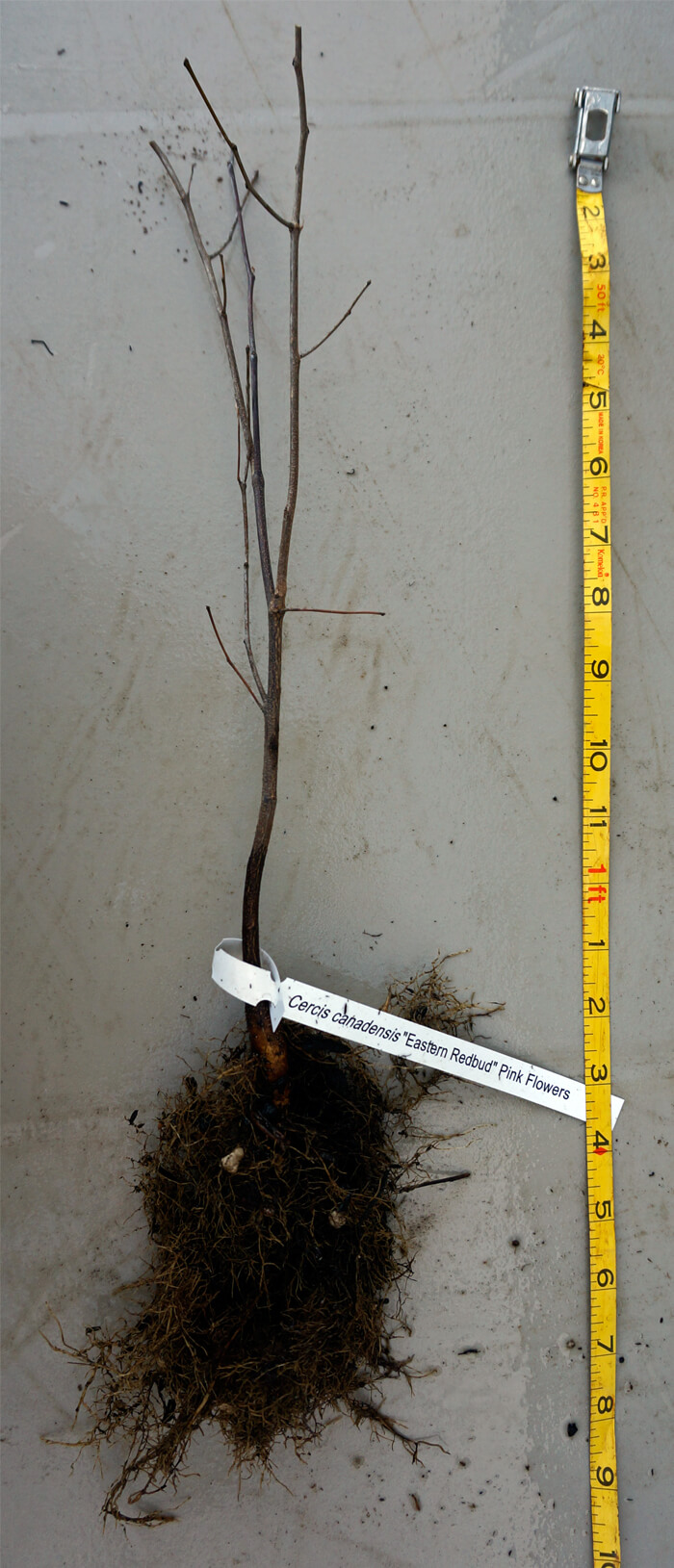 Small and medium trees (short Maples, Redbuds, Stewartia, etc.) are pruned 10-20 inches above the prune line from last year 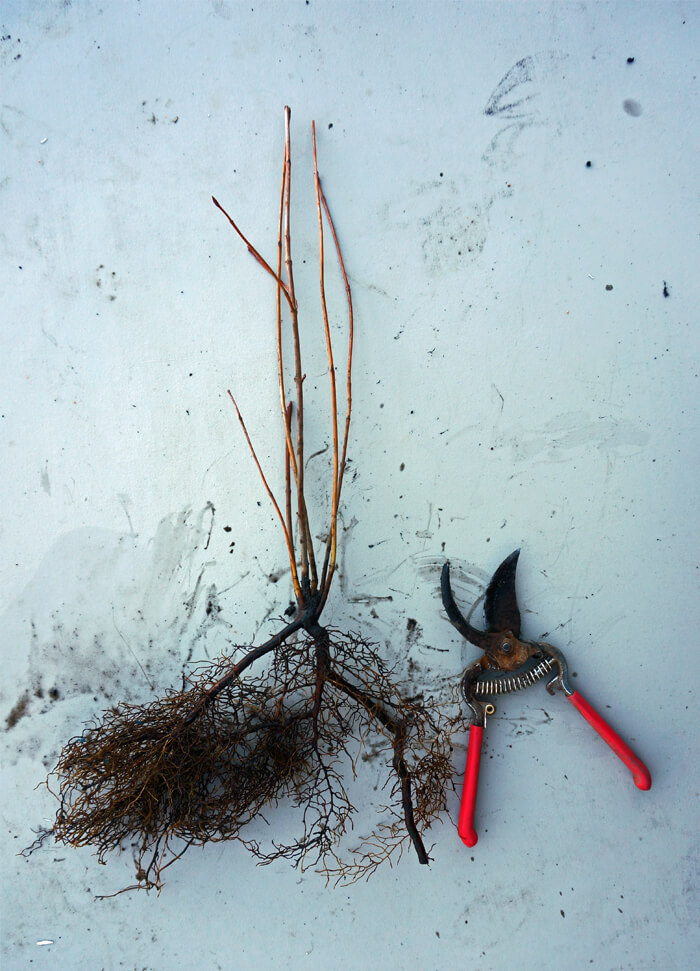 Shrubs (Weigela, Hydrangea, Viburnum, etc.) are pruned to 18 inches tall and root pruned one last time 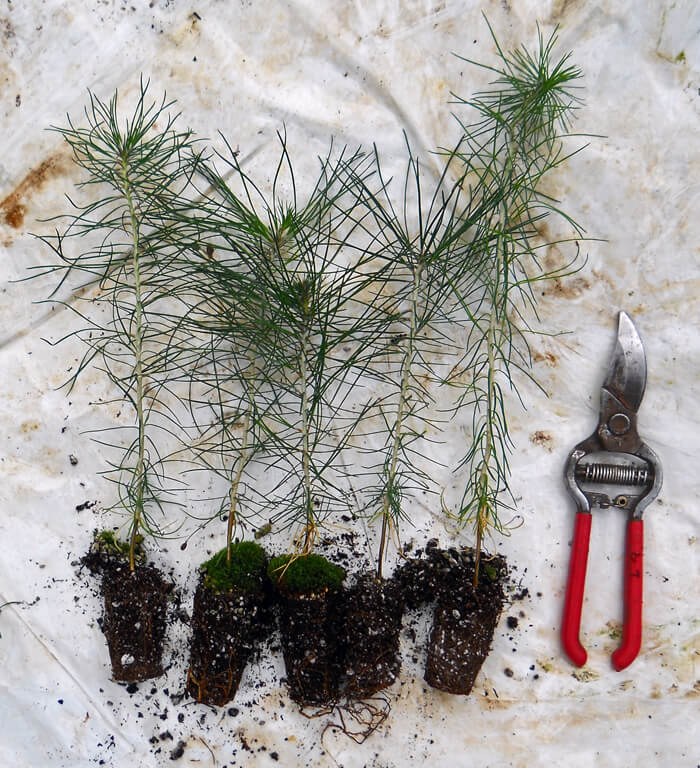 Small plug size Bamboo Plants Are Shipped In Their ContainersBamboo roots are not flexible and so plants have to be shipped in their containers. These plants are heavier and are shipped separately from bare root plants. Because they are potted they can handle longer transit times so can ship via UPS Ground instead of USPS Air Mail. Potted plants can also be shipped year-round.We regularly top our 1 gallon bamboo plants at 24-30 inches tall throughout the growing season. This results in dense, bushy foliage while allowing for economical shipping. From this size most running species will grow to 5-6 feet tall in the first spring and clumping species will usually grow to 4-5 feet tall. 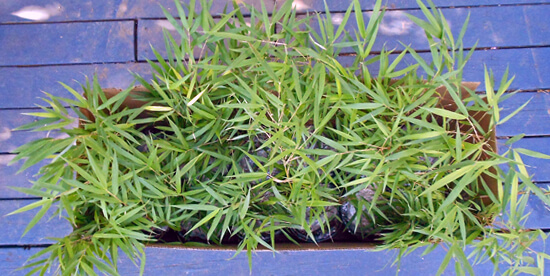 1 gallon bamboo plants strapped in and ready to be sealed. Unpacking Bare Root PlantsYou will be sent tracking details as soon as your plants are shipped. Unpack your plants as quickly as possible after they are delivered. We use two types of boxes, side-sealing and top-sealing. For boxes that are taped along the whole length you can cut the tape on either side and remove the plant bundles by cutting the tape holding the bundle to the bottom. For boxes that are sealed on the top and bottom, it is easiet to open the bottom of the box (the shipping label is at the top) and pull the bundle of plants out straight out. Check that the box is empty as there can be a second bundle of plants stuck towards the top.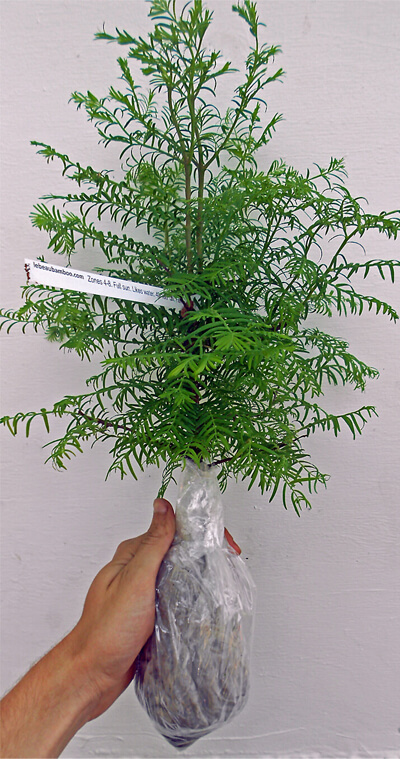 A bundle of trees. What if I am not able to plant right away?You can usually leave the plants in their shipping container unopened for 1-2 days if there were no shipping delays and you have received your plants from late November through February. Plants shipped when it is warmer can't stay in their packages for as long. |
Size Availability
Out of season.
Our main crop of most plants is available starting in late fall.
Additional batches of plugs and quarts are usually added in May.
Many of our plants are propagated in limited quantities and can sell out quickly when posted, get on the notification list below so you don't miss out. Add your email to be notified as soon as we have them back in stock:
This does NOT subscribe your email to any mailing lists, our system will only send an inventory notification message.
|

